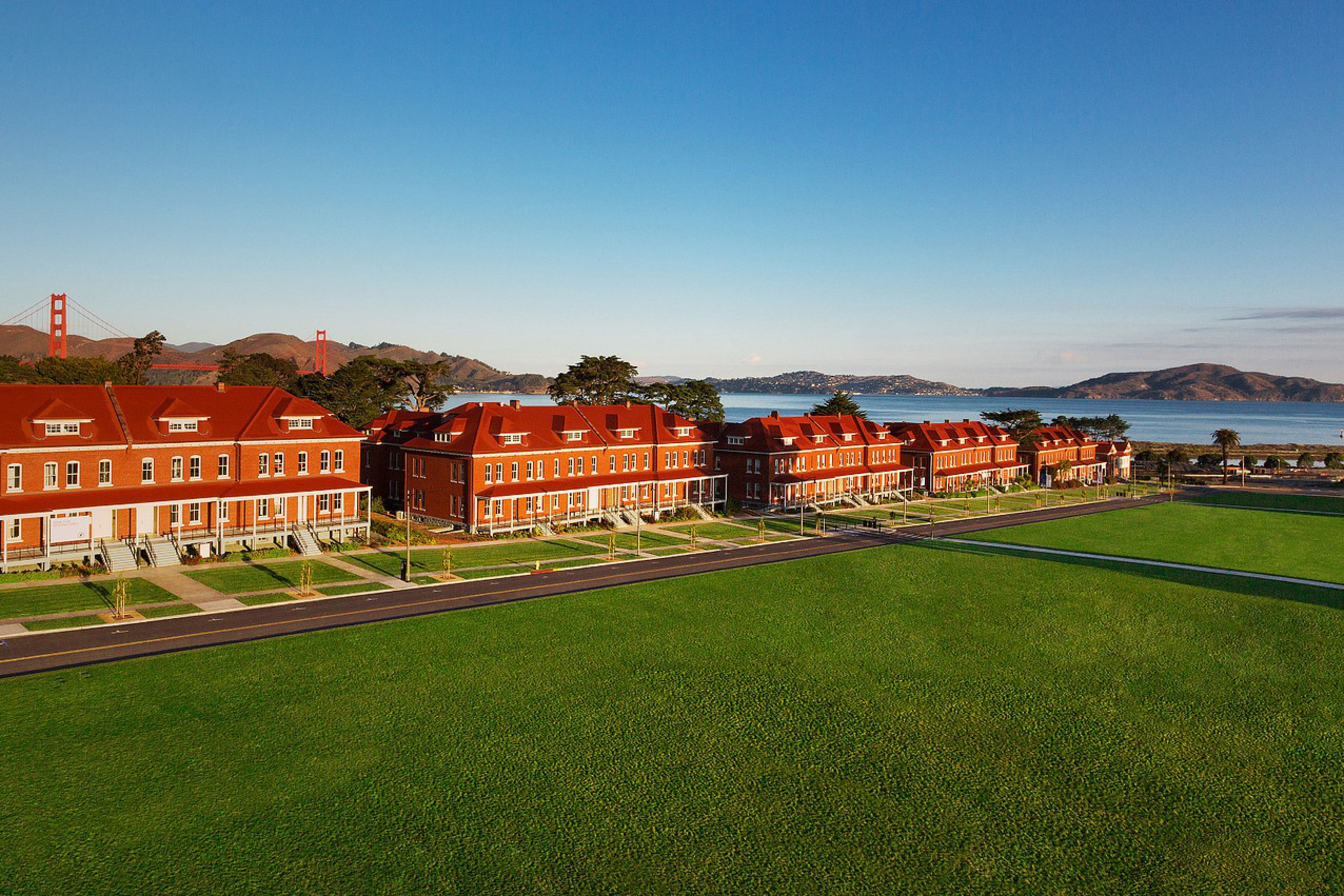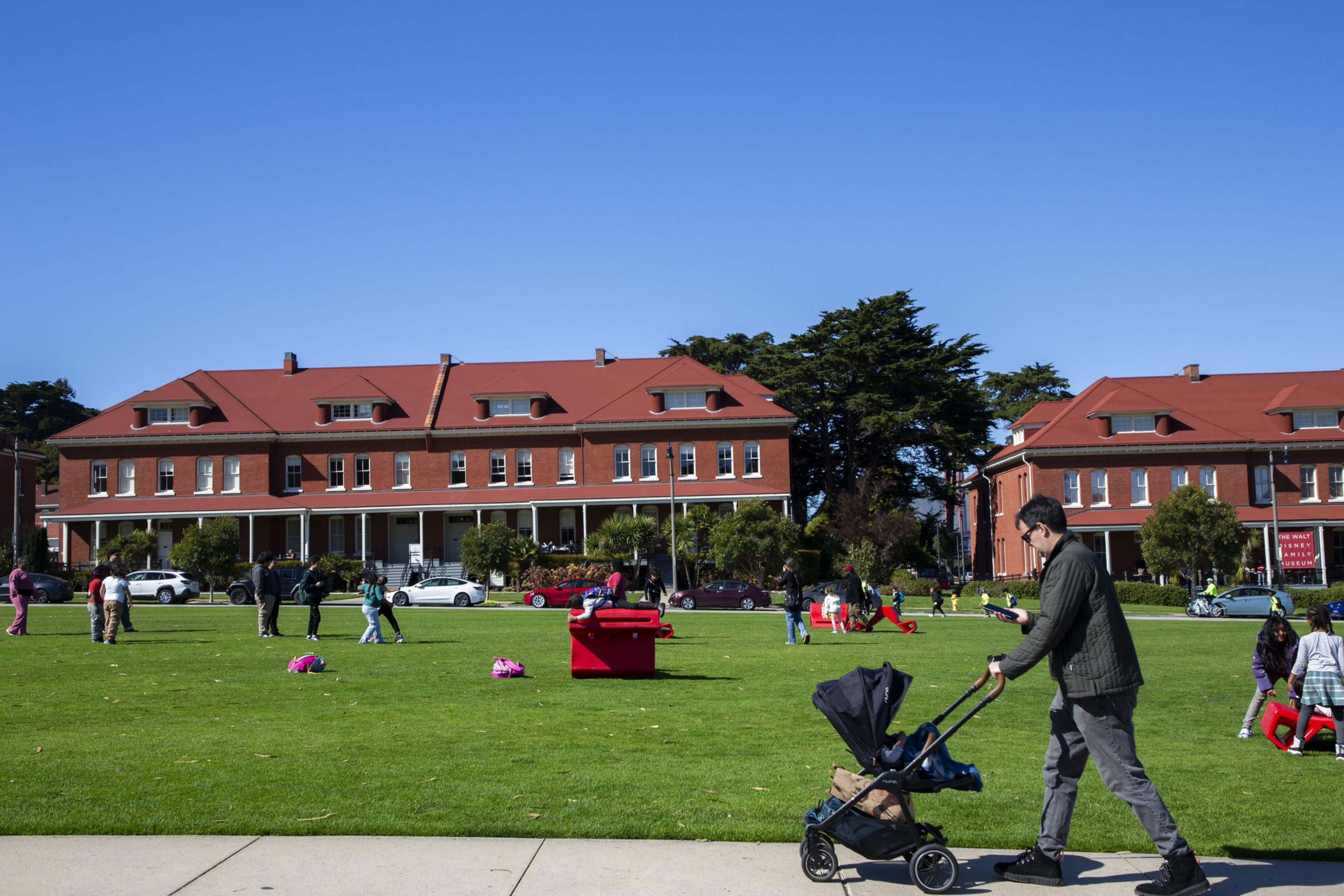President Donald Trump’s executive order to defund the Presidio Trust is already legitimizing a preposterous idea floating around tech circles: converting the park into an autonomous city devoted to unregulated capitalism.
Mark Lutter, founder of the Charter Cities Institute, (opens in new tab) which promotes “deregulated new cities,” co-wrote an article (opens in new tab) published last month in Palladium magazine in which he advocated turning the Presidio into a “Freedom City” modeled after Shenzhen in China. Shenzhen was founded in 1980 as a “Special Economic Zone” with the autonomy to set its own rules — specifically, minimal regulations on business. Its lack of regulations made it a mecca for investment and transformed what was once a bunch of fishing villages into a colossal metropolis and a center of global production.
The notion of turning the Presidio into a Freedom City percolated in the tech world last year after Trump announced a plan (opens in new tab) to create 10 Shenzhen-style Freedom Cities in the United States. Patri Friedman, a founder of The Seasteading Institute and the grandson of Milton Friedman, applauded Trump’s proposal, tweeting (opens in new tab) in November that “my dream is to turn part of the Presidio (federal land) into a neo-Tokyo (opens in new tab) of LED-accented skyscrapers and Make San Francisco Great Again.”
The Freedom Cities proposal was an awkward fit for the MAGA/America First agenda as most people understand it — it’s literally the opposite of economic nationalism. But it’s perfectly suited to the long-standing aspirations of one of Trump’s first converts from Silicon Valley: Peter Thiel.
Many were surprised when Thiel endorsed Trump in 2016. Trump, after all, ran as a right-wing populist, loudly rejecting the free-trade doctrine of the traditional Republican Party and embracing industrial planning and trade warfare. Thiel, by contrast, was a libertarian who was so averse to government intervention in the market that he once helped finance a “Seasteading” project that aimed to build floating ocean cities beyond the reach of any government.
But Thiel invested in the right unicorn. Trump not only won the presidency twice but appears to be remaking his agenda in Thiel’s image. The president has abandoned all pretenses of fighting elites on behalf of American workers, content instead to outsource the tedious business of governing to the tech industry titans who bankrolled so much of his campaign.
Once the capital of the opposition to Trump’s first administration, San Francisco is now home to a clique of libertarian-leaning tech billionaires who have become the president’s greatest enablers and beneficiaries. Their influence over him is so great that they believe Trump’s Freedom Cities initiative may have been an invitation to bring Seasteading back onshore, to their own backyard.
Trump’s embrace of Freedom Cities and his executive order potentially clearing the way for one in San Francisco show how far he has moved from his traditional base and into the orbit of the tech moguls. The idea of building a centrally planned, Chinese Communist Party-inspired, utopian city from scratch through the brute force of federal power defies every possible conception of what it means to be a “conservative.”
It’s like something out of the most feverish nightmare of a Steve Bannon-style MAGA nationalist. Pooling the funds of billionaires to create special zones across the world that are unfettered by nation-states is the very definition of “globalism.” To put an even finer point on it, Lutter has pointed to (opens in new tab) China’s Belt and Road Initiative as one successful model of establishing charter cities all over the planet.
Traditional conservatives like Tucker Carlson and Vice President J.D. Vance should be equally horrified. Shenzhen is the platonic ideal of everything they claim to loathe. It is a megalopolis of 17 million people, but the overwhelming majority (opens in new tab) are migrant laborers from other parts of China who live there for only a few years. It’s a city socially engineered for work, productivity, and innovation, not for raising families, building communities, or other normal human activities. It’s the very incarnation of the right-wing meme (opens in new tab), “You will eat the bugs, you will live in the pod.”
It’s unclear what will become of Trump’s executive order. Its legality is questionable, though his authority to replace the members of the Presidio Trust’s board is not. The trust has expressed confidence that the impact on its operations will be minimal, as the Presidio’s functions are authorized by statutory law, and it hasn’t received funding from Congress in more than a decade. But it’s hard to tell how radical the intentions behind the executive order are, and whether it will matter to the White House if the courts affirm that the Presidio’s current operations are a matter of settled law.
Alarm over this executive order may be much ado about nothing. Ten years from now, the Presidio could look exactly as it does today. Perhaps the executive order is nothing more than an ostentatious display of the White House’s commitment to rooting out “waste, fraud, and abuse.” Maybe the courts will have their say, and the administration will scrap whatever plans it has concocted.
But the fact that this is even a discussion shows that as much as most San Francisco residents despise the president, it is from a handful of them that Trump derives his power — and to whom he has pledged fealty.
Leighton Woodhouse is an independent journalist and documentary filmmaker in Oakland. He writes the Substack newsletter Social Studies. (opens in new tab)


